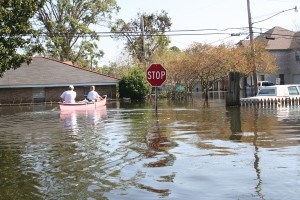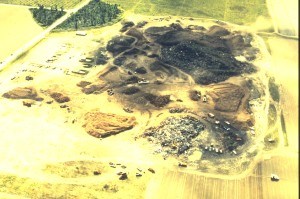A typhoon that slammed the Philippines is among the strongest on record with sustained winds of nearly 150 mph when it made landfall, and the destruction it caused rivals that of some of the most powerful hurricanes to strike the U.S. mainland. A hurricane’s intensity is typically gauged by its barometric pressure. Below are the five most intense hurricanes on record to strike the U.S. mainland, ranked by minimum pressure at landfall, according to the National Hurricane Center in Miami. Forecasters say the accuracy of wind speeds is somewhat uncertain for some historical hurricanes because of limits on technology at the time.
THE FLORIDA KEYS LABOR DAY HURRICANE, 1935:
The Hurricane Center says no wind measurements were available from the core of this small but “vicious” hurricane, which was a Category 5 storm when it reached the Florida Keys. But a pressure measurement taken at Long Key, Fla., makes it the most intense hurricane ever to make landfall on the U.S. mainland. It was blamed for 408 deaths and caused an estimated $6 million in damage at the time.
HURRICANE CAMILLE, 1969:
Camille was a Category 5 storm when it made landfall along the Mississippi coast on Aug. 17, 1969, with maximum sustained winds estimated at nearly 200 mph and a devastating storm surge. The storm caused roughly $1.4 billion in damage at the time and was blamed for 143 deaths on the Gulf Coast, 113 deaths from flooding in Virginia and three deaths in Cuba. Its maximum sustained winds reached 190 mph.
HURRICANE KATRINA, 2005:
 The most destructive storm in U.S. history and also one of the deadliest, Katrina was a Category 3 storm with estimated maximum winds of 125 mph when it made landfall near Buras, La., on Aug. 29, 2005. Katrina, which made a second landfall near the border of Louisiana and Mississippi, unleashed catastrophic flooding from its monster storm surge. Broken levees left most of New Orleans inundated. Damage was estimated at $75 billion, though rebuilding costs have far exceeded the initial damage. Katrina was blamed for around 1,200 deaths.
The most destructive storm in U.S. history and also one of the deadliest, Katrina was a Category 3 storm with estimated maximum winds of 125 mph when it made landfall near Buras, La., on Aug. 29, 2005. Katrina, which made a second landfall near the border of Louisiana and Mississippi, unleashed catastrophic flooding from its monster storm surge. Broken levees left most of New Orleans inundated. Damage was estimated at $75 billion, though rebuilding costs have far exceeded the initial damage. Katrina was blamed for around 1,200 deaths.
HURRICANE ANDREW, 1992:

Several days after it almost dissipated, Andrew rapidly strengthened and was a Category 4 storm at landfall in Homestead, Fla. The Hurricane Center measured a peak wind gust of 164 mph. Andrew continued into the Gulf of Mexico before reaching the central Louisiana coast as a Category 3 hurricane. Andrew was blamed for 23 deaths in the U.S. and three deaths in the Bahamas and caused an estimated $26.5 billion in damage in the United States.
HURRICANE IN INDIANOLA, TEXAS, 1886:
This hurricane wiped out Indianola, a Texas port city that had been founded four decades earlier. What was left of the city was abandoned after the storm roared ashore in August 1886. The hurricane was blamed for 30 deaths and caused an estimated $3 million at the time.
NOTE: Superstorm Sandy, one of the most destructive storms in U.S. history, had weakened to a post-tropical cyclone when it made landfall in New Jersey last year. But its enormous size pushed a catastrophic storm surge into the heavily populated East Coast.
Was this article valuable?
Here are more articles you may enjoy.

 Indian News Agency Sues OpenAI for Copyright Violation
Indian News Agency Sues OpenAI for Copyright Violation  What’s Behind New York Fires? Climate Change, Land Use and History
What’s Behind New York Fires? Climate Change, Land Use and History  Chipotle Shareholders Sue Over Fallout From Skimping on Portion Sizes
Chipotle Shareholders Sue Over Fallout From Skimping on Portion Sizes  Florida Citizens’ Brass Tired of ‘Clickbait’ News on its Hurricane Claims Denials
Florida Citizens’ Brass Tired of ‘Clickbait’ News on its Hurricane Claims Denials 